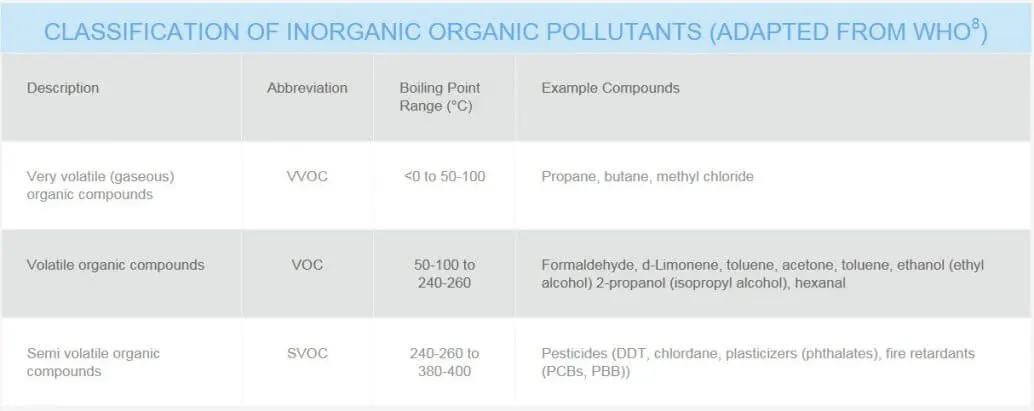Chemical & VOC Testing
Chemicals and VOCs can greatly affect your indoor environmental quality and cause some very offensive odors. They can come from a variety of sources, but the most common culprits are:
- Building materials
- Carpeting
- Laminated wood
- Cleaning chemicals
- Cosmetics
- Paints
- Air fresheners
- Moth balls
- Printing inks
- And, unfortunately, much more
WHAT ARE VOCs?
Volatile Organic Compounds are organic compounds that can easily become vapors or gases. They can be released by burning certain items, oil & gas fields, or by solvents like paints, glues and other products of that nature. A vast majority of VOCs are hazardous air pollutants and some contribute to climate change when combined with other gases.
VOC TESTING
Needless to say, when certain chemicals are found elevated in living spaces, it can negatively affect our health. The health effects are directly correlated to the quantity of exposure. With very specific testing, we can determine the type and quantity of VOCs within your home or building. There are 2 primary ways VOC testing can be performed.
- VOC Meter – is completed on site and tests for VOC in real-time. These meters can be very useful in identifing a baseline value of the chemicals in the air. It’s crucial that a qualified inspector takes the readings because they can accurately interpret them. They should take the readings in parts per billion as that is the level most VOCs in the air are.
- Lab Analysis – takes a sample of the air in the questionable areas and sent to a lab for analysis. This particular method works well when there’s a specific chemical that needs to be quantified.
HEALTH ISSUES RELATED TO VOCs
VOC exposure can be tied into unexplained health effects. According to the EPA, symptoms could include:
- Irritation of the eyes, nose and throat
- Headaches
- Loss of coordination
- Nausea
- Damage to the liver, kidney, and central nervous system
ELIMINATING EXCESS VOCs
Addressing VOC issues generally falls into two categories: removing the source of material and/or diluting the pollutant. Obviously, if the offending items is easily identified and easily removed, the choice is simple. Toss it out. Or, if the item is of significant value, sometimes it can be isolated outside of the home during the off-gassing period.
We like these scenarios. Examples include plug in air fresheners, scented candles, newly refinished furniture, etc. The solution is quick and inexpensive for our clients.
In many situations, the answer is not so simple. This is especially true in homes with light to moderately elevated VOC levels. If the chemical odor is intense, our equipment can often pinpoint the source. However, when the levels are only moderately elevated, the dilution from natural air currents can greatly increase the difficulty of finding the underlying cause.
The answer? Dilution. Increasing the fresh air flow into a home can kill two birds with one stone. First, the increase in fresh air can often dilute the proportion of the offending VOC to an undetectable level. Second, the fresh air will lower the relative humidity, thus reducing mold and dust mites.
This is why in fresh air is nearly always superior to filtration. A home needs an extraordinary amount of expensive filters to simply equal the air quality benefits that can be realized by increasing the quantity of fresh air. Now, this is not as simple as opening a window. Calculated, automated fresh air intake systems are necessary.
Dilution is often also the answer to VOC issues stemming from difficult to replace items such as cabinets and flooring. Improving ventilation by installing fresh air intakes, HRVs/ERVs, and other techniques can mitigate the VOC exposure if you can’t physically remove the source.

World Health Organization, 1989. “Indoor air quality: organic pollutants.” Report on a WHO Meeting, Berlin, 23-27 August 1987. EURO Reports and Studies 111. Copenhagen, World Health Organization Regional Office for Europe.


